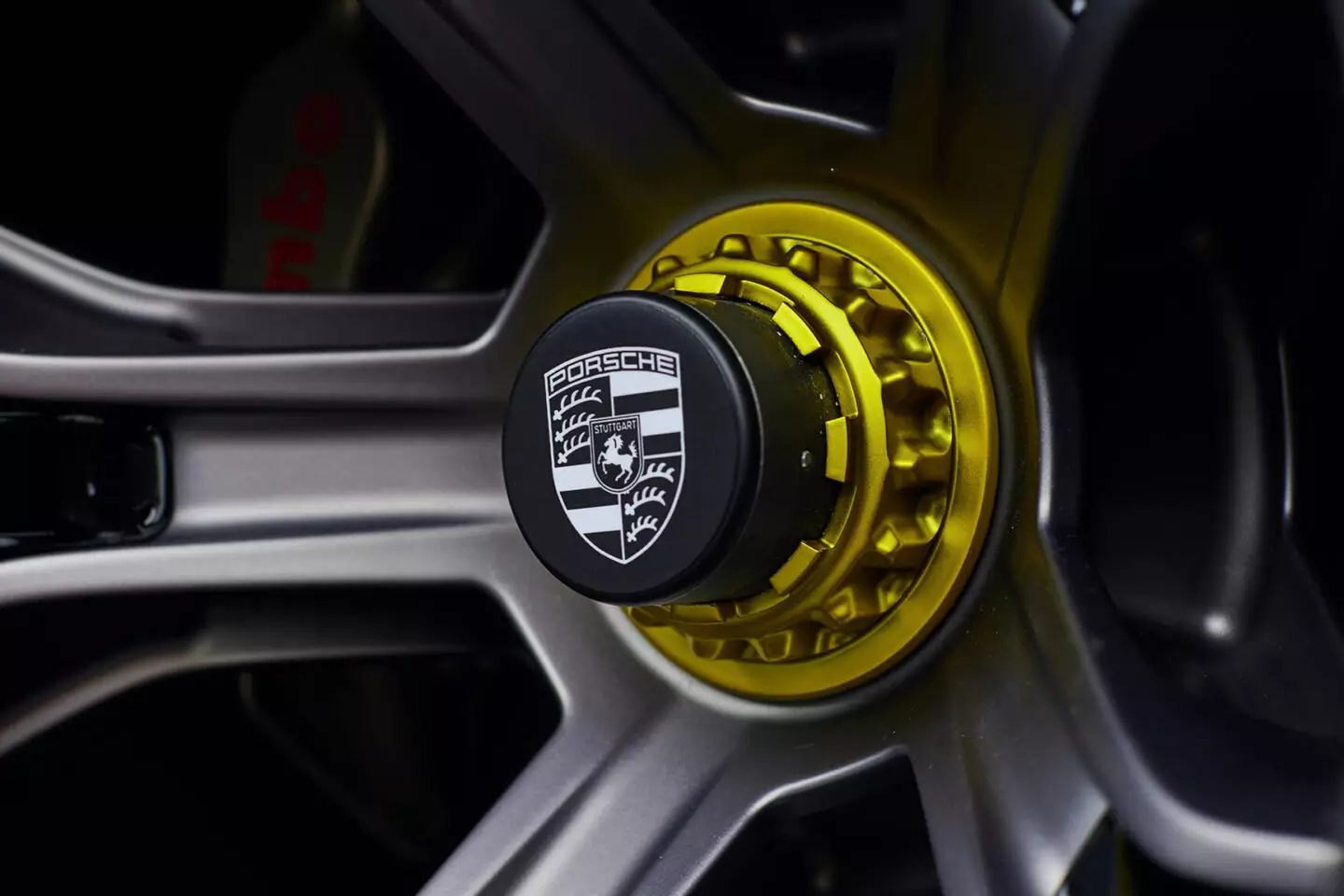Exciting is Porsche's vision for its single-brand trophies in the electric age with the unveiling of the Mission R , which gives us a rough picture of what to expect from the future generation of electronically powered competition machines.
The Mission R delivers close to 1100 hp (800 kW maximum power, or 1088 hp) in “Qualifying” mode and 500 kW or 680 hp continuous in “Race” mode, has a mass around 1500 kg, achieves less than 2 .5s up to 100 km/h and gives more than 300 km/h of top speed.
The battery has a total capacity of 82 kWh, enough for sprint races between 25 minutes and 40 minutes in duration. However, with the 900 V technology that the Mission R brings (800 V on Taycan, 400 V on most other electrics) it allows charging up to 350 kW, which translates to a 15-minute stop to “fill” the battery from 5% to 80%.
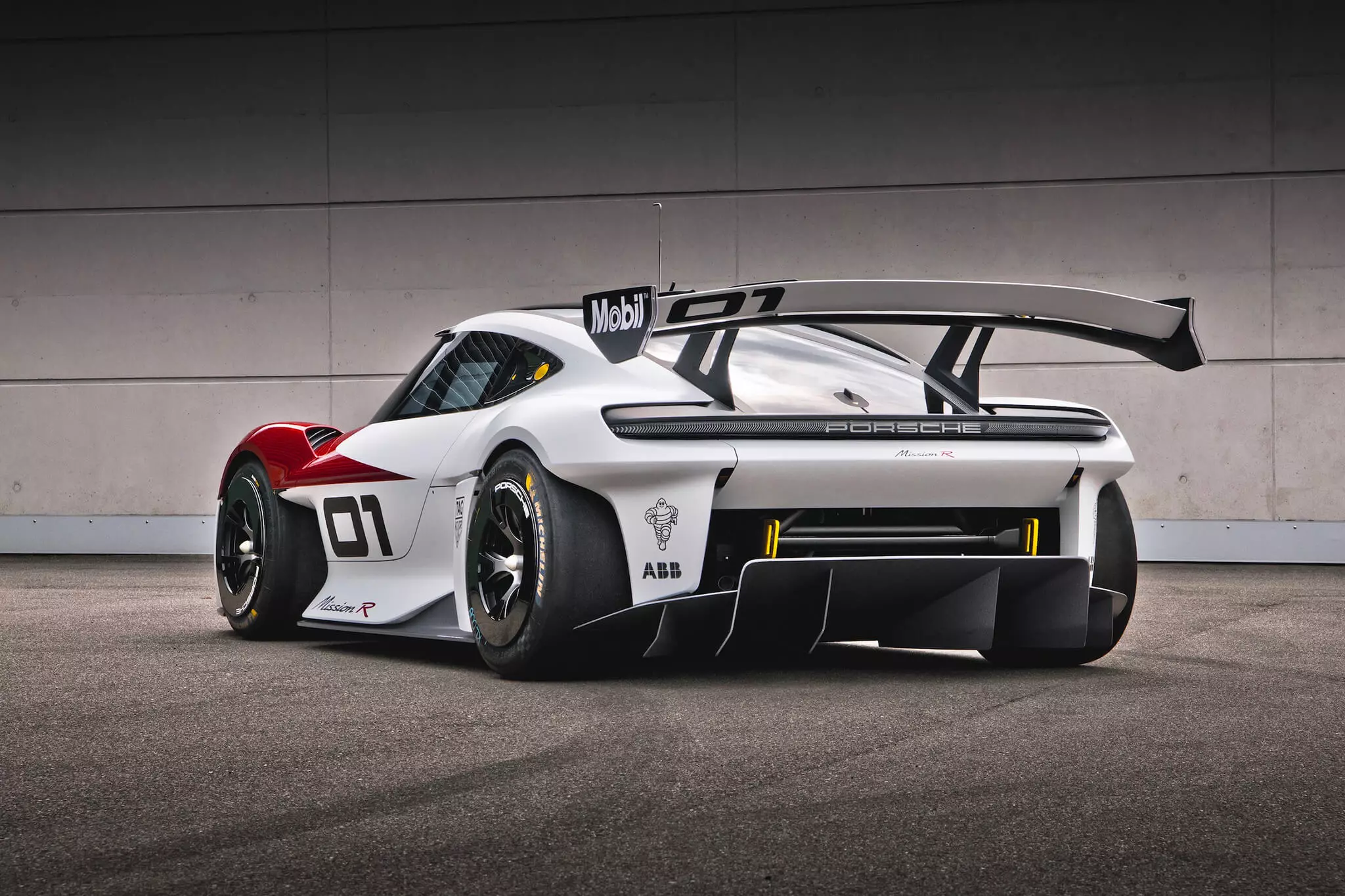
Oliver Blume, Chairman of the Executive Board of Porsche AG“As a complement to our involvement in the Formula E World Championship, we are now taking the next big step towards electric mobility. This concept is our vision of an electric racing car for customers. Strong Porsche: performance, design and sustainability."
From mid-engine to mid-battery?
The Mission R takes on the proportions of a mid-engine sports car, that is, a sports car with a central rear engine, just like the 718 Cayman. Here, the space formerly occupied by the combustion engine is now filled with the battery — can we call this Mission R… mid-battery (battery in the center rear position)?
Regardless of what we call it, it is a solution that allows you to maintain a very low driving position — unlike trams with batteries placed at the base of the platform, raising the height of the passenger compartment floor — and still allows to maintain an optimized distribution of pastas.
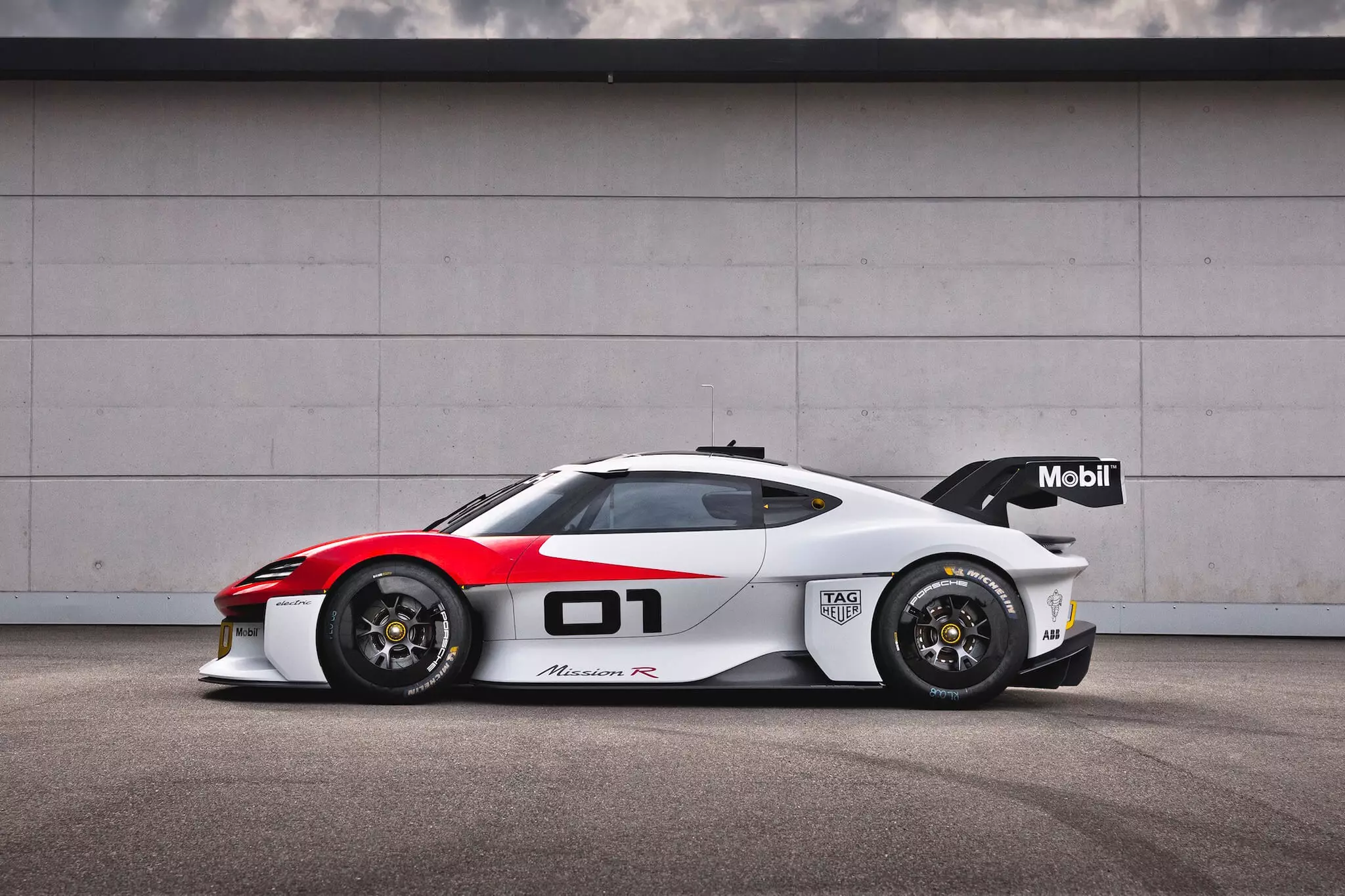
The two electric motors are positioned directly on their respective axes; the Mission R thus has four-wheel drive. The front engine delivers 320 kW (435 hp), while the rear can deliver up to 480 kW (653 hp).
Unlike the Taycan, the Mission R does not need a two-speed gearbox and has only one ratio. Porsche justifies the decision with the fact that the majority of the races that this competition car is destined to have a launched start, and therefore, there is no need to optimize starting from scratch.
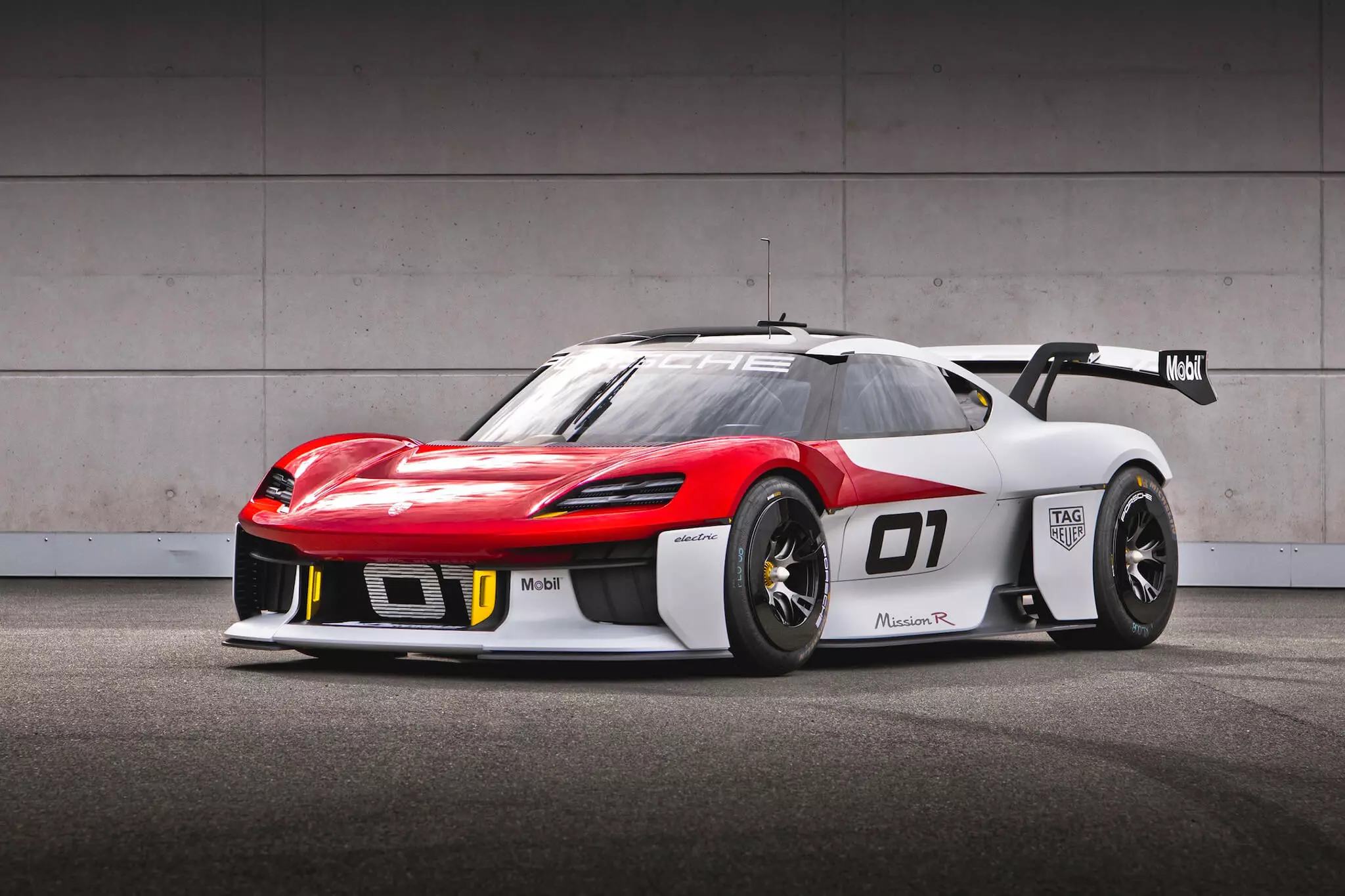
Cooling… oil
Porsche took no chances. To maintain the expected performance of both the engines and the battery throughout a race, the thermal management of the entire kinematic chain is carried out with direct oil cooling in the battery cells and electric motor stators.
Porsche says that with this type of direct cooling, unlike other liquid cooling systems, it allows much more heat to be dissipated, keeping these components within their optimal thermal operating window. The so-called “derating”, ie the reduction in battery power due to thermal conditions, is thus eliminated.

All in all, Porsche says the Mission R achieves on-circuit performance equivalent to the Porsche 911 GT3 Cup (992).
After CFRP, NFRP
What's new in the Porsche Mission R also involves other issues around sustainability, such as the materials with which it is made. The body panels, for example, are not carbon fiber, or more correctly, they are not carbon fiber reinforced plastic or CFRP (carbon reinforced plastic).
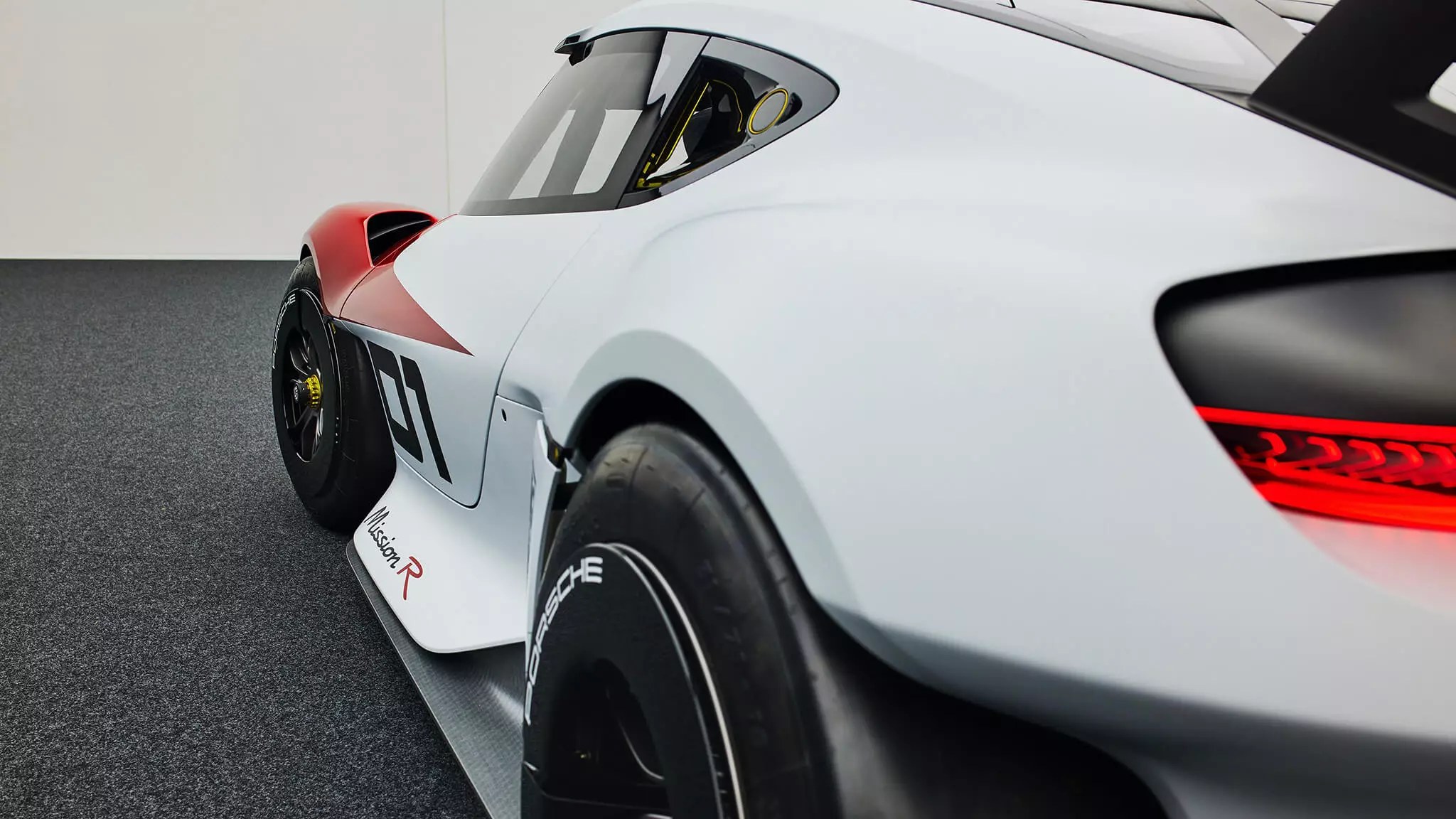
Porsche used another type of composite material, with more evident ecological properties: NFRP (natural fiber reinforced plastic), or plastic reinforced with natural fibers. In this case, this material is produced from flax fibers. In addition to the body panels, the aerodynamic elements (front spoiler, diffuser and side skirts) and many parts of the interior (door, rear and seat panels) are also in NFRP.
NFRP components can't achieve the same strength or lightness levels as CFRP, but they're not far off: the components are strong enough to take on semi-structural tasks, adding just 10% to the weight of the same carbon fiber component.
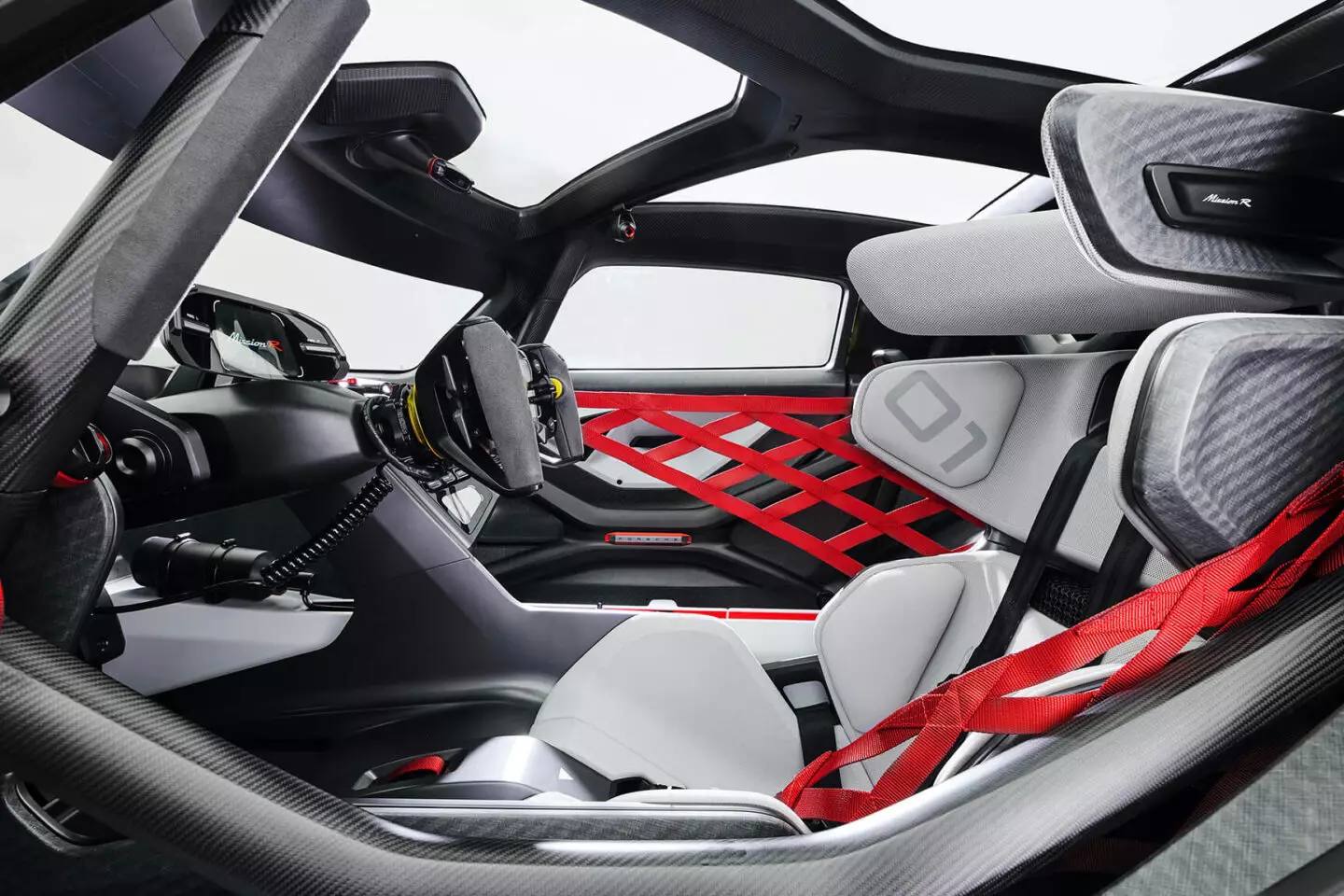
On the other hand, NFRPs generate 85% less CO2 emissions during their production than in the equivalent process used for carbon fiber.
However, carbon fiber is used in a new roll cage integrated in the body, less intrusive, lighter and contributing to a smaller car. However, motor sport rules require the roll cage to be made of steel, but Porsche hopes that in a few years, when we know the Mission R production version, the rules will allow the use of this solution.
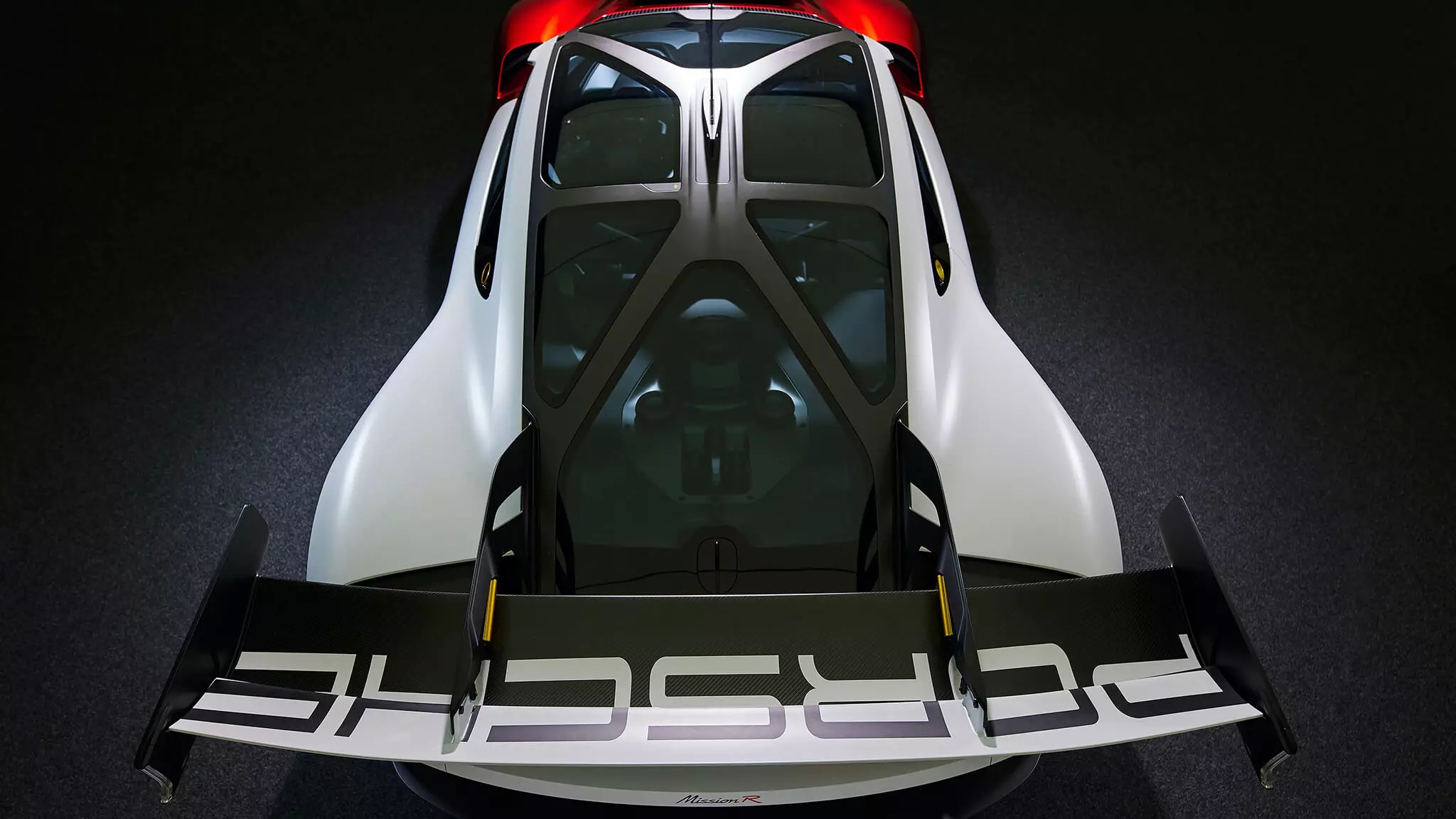
The future 718 Cayman?
The previous mention of 718 Cayman was not innocent. Take off the Porsche Mission R racing suit and we get a sporty two-seater with a silhouette virtually identical to the 718 Cayman we know.
The Mission R is a first glimpse of what might be, or at least what to expect from the design of the 718 Cayman's successor. Rumors surrounding the successors of the 718 Cayman and 718 Boxster have focused on what kind of powertrain they will have, whether a combustion engine or an electric motor, a discussion that Porsche itself has had:
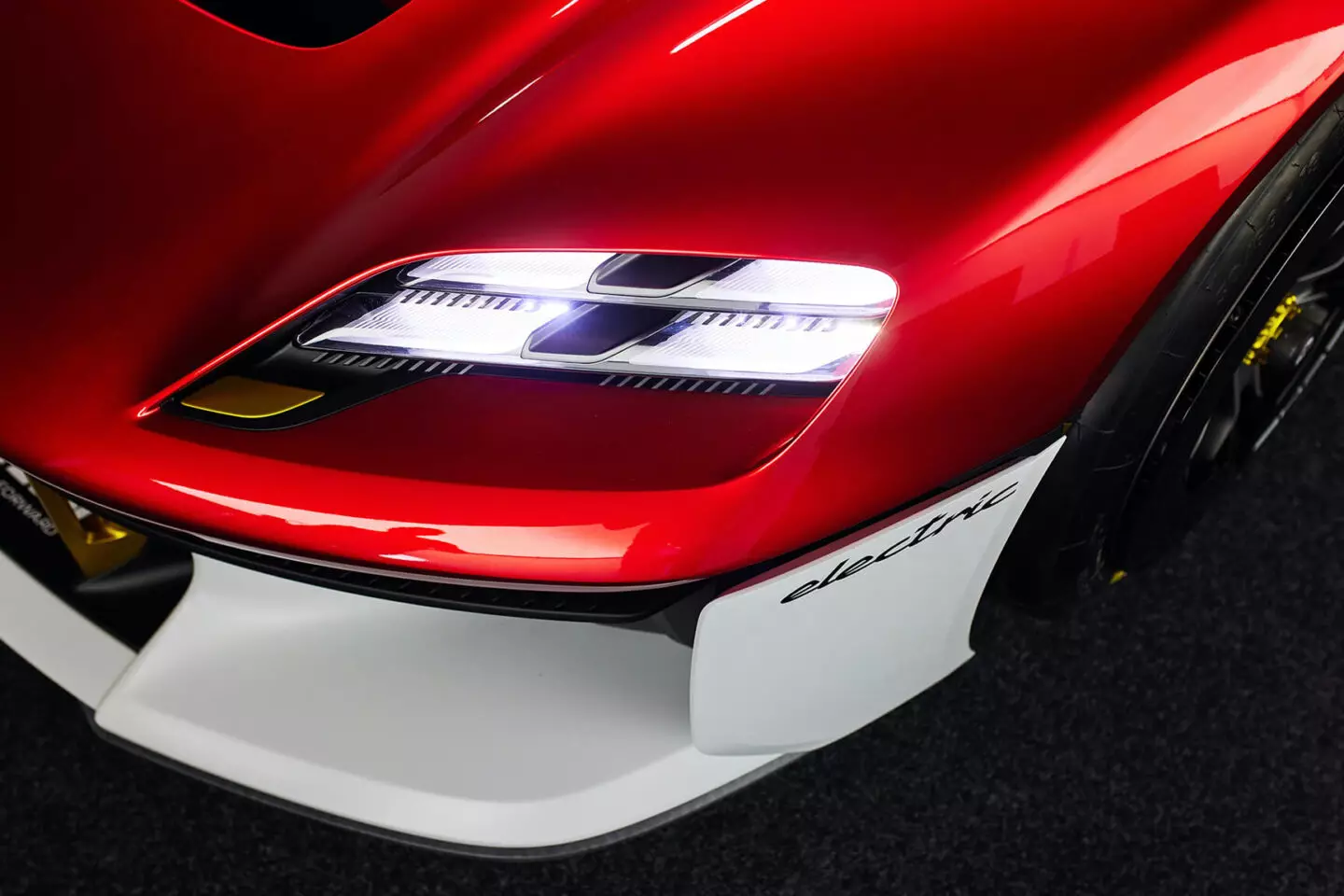
And there are plenty of signs that this concept could be the first glimpse of the 718 Cayman's successor.
Starting with the dimensions, with the Mission R being 53 mm shorter than the 718 Cayman, standing at 4326 mm. However it is much wider and lower in, respectively, 190 mm (1990 mm) and 96 mm (1190 mm), but let's assume here that, being still a prototype, and for more than a competition car, they “exaggerated” more in proportions for greater dramatic effect.
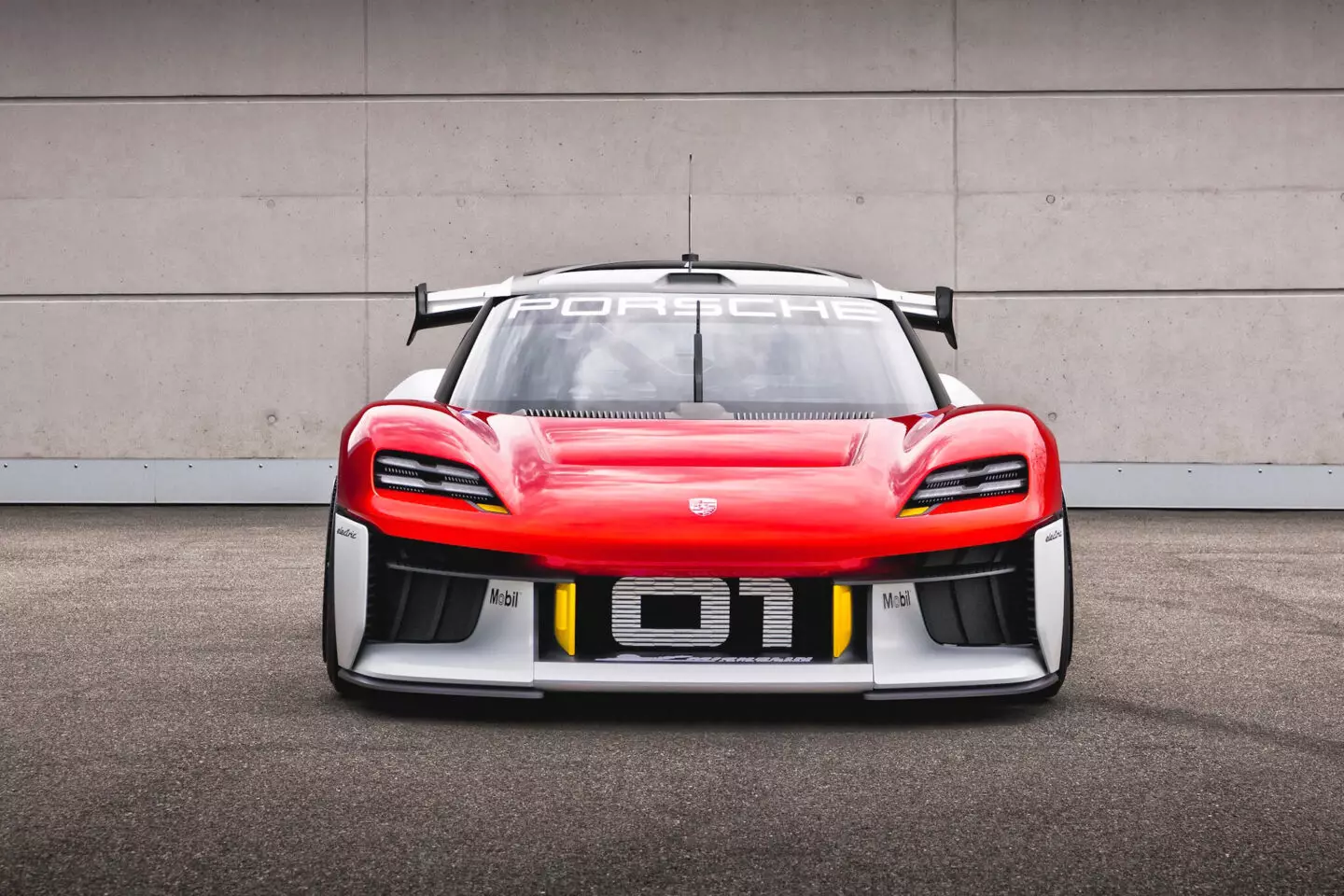
Also the name chosen, Mission R, reflects the names chosen for the prototypes that anticipated the Taycan and Taycan Cross Turismo, respectively, the Mission E and Mission Cross Turismo.
Finally, Porsche has never held a single-brand trophy with a competition car that is not derived from a production car. Is Mission R a vision of the future 718 Cayman? We believe so.
